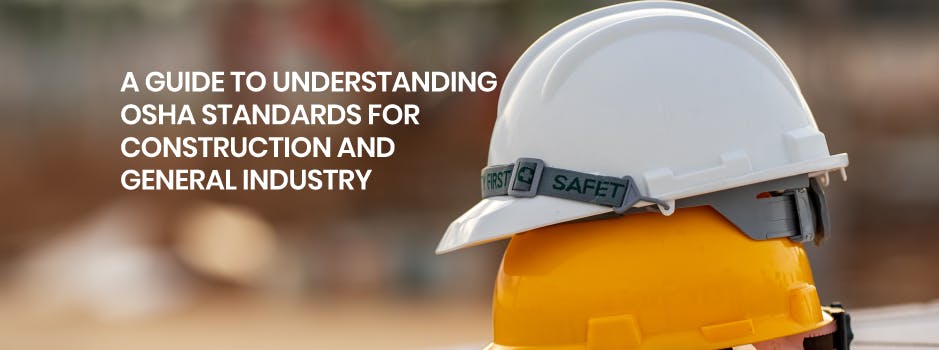OSHA standards for construction and general industry
OSHA standards for construction and general industry cover physical aspects of the workplace such as existing routes, walking surfaces, and other emergency planning. It also involves the workplace activities such as brazing, welding, and power tools. OSHA general industry standards are applied to many fields that include construction, agriculture, medicine, and maritime.
If any organization is religious, OSHA standards are also applied to it. The only thing that employers are exempted from OSHA standards are family-operated, self-employed persons and workplaces that are regulated by many federal agencies such as the mine safety and health administration.
OSHA construction regulations and violations
The OSHA has been reported for the many death ratios in the private industry. Construction alone has counted many deaths which are increasing day by day. Today also many 100,000+ construction workers are injured on the job every year. The violation that has been resulted in deaths are as follow and Construction safety standards must be followed to avoid them.
- Fall protection
OSHA safety standards related to fall protection include safety tips for cleaning spills and the use of fall prevention equipment. Every year 300,000 people got injured due to falls in the work area. This mostly happens on construction sites. The risk of falling and slipping is what every business has to take it seriously.
- Hazard communication
OSHA recordkeeping companies have many hazard communication plans that help them keep everyone accountable and safe. An OSHA compliance plan consists of 4 parts that include appropriate labels, written programs, datasheets for material safety, and comprehensive communication training. These 4 parts help employees to be clear about the chemical hazards.
- Scaffolding
Scaffolding is very important equipment that is used on construction sites. This helps workers in repairing, building and cleaning specific structures. These are the necessary equipment that helps workers to make the project successful but can also put the employee’s life at risk of falling or slipping. For this OSHA safety best practices should be used to avoid violations.
- Machine Guarding
Machines should be guarded properly because they will put workers in harm. This can also injure the employees by sparks, moving parts, or flying pieces. Make sure that machine should have safety guards to avoid such causes. Proper machines and their guarding reduce severe injuries from blades, sparks, and moving parts. Employees should be trained in the safety precautions that include machine inspections and putting guards in fixed places.
- Face and eye protection
Employees have to come in contact with environmental, chemical, and radiological hazards and for that face and eye protection is necessary. Workers should undergo the OSHA safety program to ensure their safety and health. The OSHA safety training should have the proper details on equipment when it is necessary when to use it, its care and maintenance, and its disposal. If the employees are not well trained, then it will cause severe face and eye injuries such as blindness and even death.
General industry safety regulations
There are a few tips and tricks that must be followed to ensure safety while working in the industry. The tips are as follows:
- Stay aware of the surroundings and the hazards. Take precautions to avoid them.
- Wear proper PPE (personal protective requirements) to protect yourself from the hazards.
- Follow the rules and regulations. Make sure to follow these rules to stay safe.
- If someone is feeling overwhelmed, then make sure to rest to avoid the issues.
- Stay focused and calm when working in hazardous places. OSHA 10 certification and OSHA 30 certification for the will help you stay safe wherever you are working.
- Ensure that the tool the employee is using is right. The injury the employees get is due to not using proper PPE.
- Don’t use life equipment as they are dangerous to work with. Before you do any repairs on the equipment ensure that the correct procedure must be followed.
- Be sure to store and put labels on the chemicals correctly. OSHA general industry standards include many citations annually regarding hazards so stay active on that.
- Also tell other employees about the hazards. If you are performing any new task, make sure to tell the changes to other as well so that they stay active and alert.
- If you see hazards they stop working. To ensure safety stop working and take steps to address the hazards.
Safety management in construction and general industry
A company never apply their safety management risk to the cycle of unsafe work as soon as any serious accidents take place. It is a way of identifying hazards and avoiding risks on the job sites. Stop reacting to the incidents safety management systems are very active and they help in preventing accidents.
A good safety management system works on the following management method:
- Plan the resources required for every stage of the process and also compile the element that is needed to complete the phases and management levels.
- Do apply the procedures and policies company-wide, and it helps in including the safety of training and education.
- Check the effects of implementation that are against the metrics and goals.
- Discover the issues and then return to the planning stage.
This cycle makes sure to provide a safety culture of understanding in the construction and general industry.
Conclusion
Construction is a high-standard industry that compromises various activities involving alterations, construction, and repair. The construction workers are engaged in many activities, and they are exposed to many serious hazards, such as falling from rooftops, being struck by heavy construction equipment, asbestos, and silica dust. The tools, information, and resources provided in other construction industries are designed in a way that helps in identifying, reducing, and eliminating construction-related hazards.

